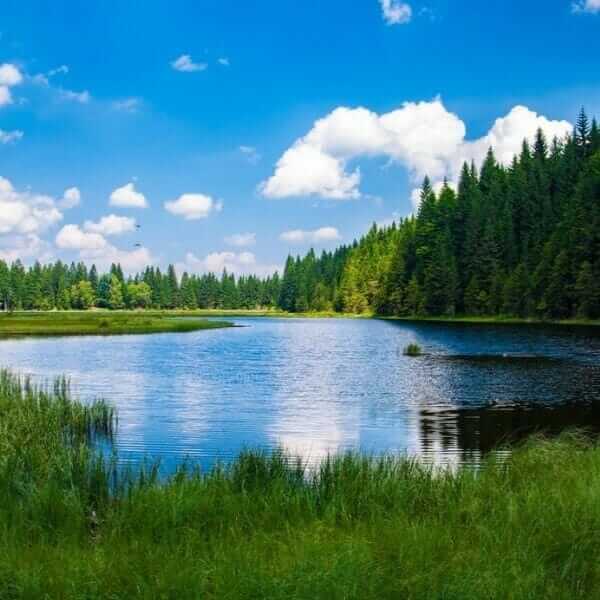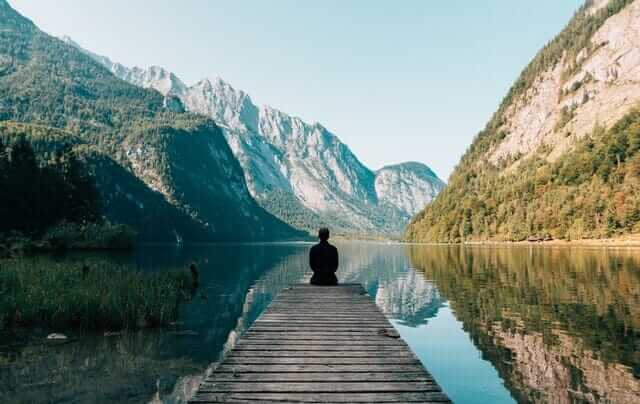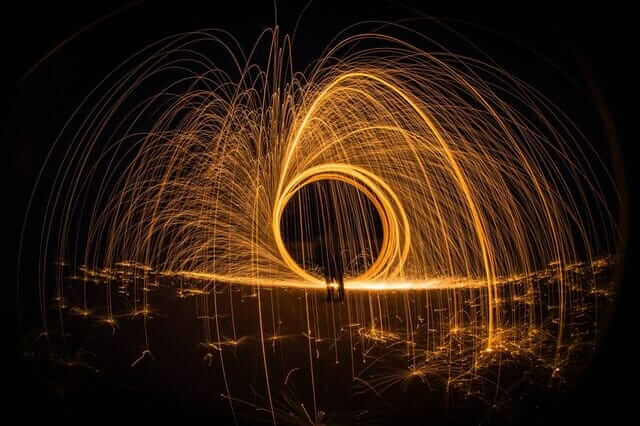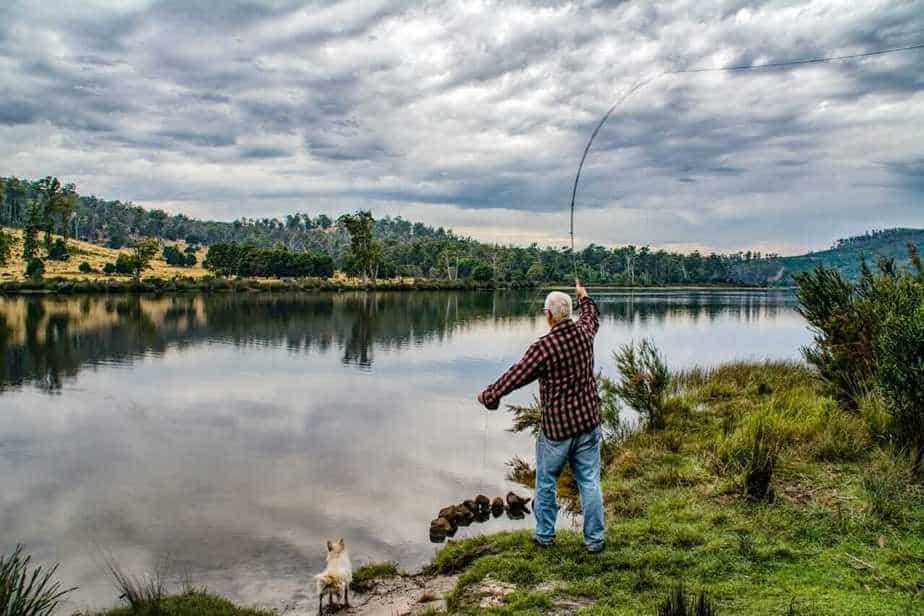Fishing is a fairly inexpensive hobby to pickup, but that doesn’t lessen the amount of fun and enjoyment you are sure to have. Today we are going to take a closer look at one type of fishing in particular – lake fishing and which bait to use in a lake.
There are 2 main types of bait that work best at lakes: live and artificial ones. The most common live baits are: worms, fly worms, leeches, minnows, crayfish, crickets and grasshoopers. Artificial baits: soft plastic worms, crankbaits, spinners, jigs and spoons.
Which Type Of Bait To Use In a Lake?
Fishing can be a relaxing way to spend your time. It can be a great source of stress relief and allows you to bask in the nature surrounding you that you may not often have a chance to enjoy.
Lake fishing is by far the most popular fishing styles. This particular style of fishing is most popular due to the fact that lakes are easily accessible by most people despite their location.
These lakes can either be man-made or be naturally occurring, Man-made lakes are far more likely to be found. Fisherman are far more likely to have a successful fishing trip when visiting a natural lake, though.
It is important to note that due to the size of some lakes you may not be able to use a boat. This is done in an effort to protect the wildlife as well as yourself. If you are allowed to use a boat you may be limited to only using a Trolling motor. Using this type of motor actually helps to encourage fish population growth because the motor does not disturb them nearly as much as other options.
A common misconception that people have when it comes to lake if fishing is what actually qualifies as a lake. lakes are often mistaken for ponds due to the fact that they believe that the size, how water is fed into the body of what, or a combination of both has an effect on how the water is classified.
There is no officially scientific difference between the bodies of waters at this time, but it is believed that lakes are larger and have more fish within them. This makes lakes great for fishing when compared to other bodies of water.

Types Of Fish Which Can Be Caught In A Lake:
The types of fish that you can catch will entirely depend on the location of the lake that you will be fishing at as certain species of fish are only suitable for the water conditions in a specific region such as the South.
Another aspect that affects the type of fish that you will catch will be what type of bait you use. Some fish are huge fans of a particular bait, such as worms, that other fish don’t respond as well to.
It is also important to be aware of what type of water you are fishing in, saltwater or freshwater, as it will have a great effect on the type of fish that you will have a chance at catching.
If you are fishing in a freshwater lake there are a wide variety of fishes that can be caught within those particular conditions. Trout, Bass, Walleye, Perch, and Crappie varieties will be the most common fish in any freshwater location due to their ability to live in most conditions, as well as the fact that their species aren’t very rare.
In some locations there are overpopulation of these species making it more likely that you will only catch a certain type of fish rather than a variety.
If you are visiting a saltwater lake, which aren’t as widely available as freshwater, you can expect to catch a smaller variety of fish. The most common saltwater fish that you will be likely to catch are bonefish, halibut, snapper, and striped bass.
Due to the fact that saltwater lakes are not very common you may have a tougher time than expected catching anything at all.

What Type Of Bait To Use For Different Types Of Fish:
There are several different types of fish and as a result there are several different baits that you can choose to use. You may choose different baits for a variety of reasons, but it is very important that you actually enjoy using that particular bait and see at least some results when using it.
There are a ton of different details that you should take into consideration when choosing a bait for your needs.
A great tip that you should consider is matching your bait to your fish. If you are trying to catch largemouth bass it is recommended that you use plastic worms. In fact, these plastic worms were created decades ago with the bass in mind.
They are insanely attracted to bright colors that zip through the water quickly and that is just how they are designed. Some of these worms have been modified to work better for capturing other types of fish, but it is our opinion that they work best for bass.
Crankbaits are also a popular baiting choice. Crankbaits are also commonly known as plugs and are artificial lures made out of hard materials such as plastic or steel making them very sturdy when compared to the other options you can select.
These baits are designed to float on top of the water and are usually shaped to look like minnows or other small fish as bigger fish will be more likely to come towards it and allowing you to have a successful fishing trip. These baits are also designed to move in a zig zag motion making them great for smaller more active fish such as trout.
Spinner baits are great for usage in situations in which a regular lure would get hung up or captured in debris. Spinner baits often feature a weighted end and a single hook and spinner attached.
This is a great bait for lake fishing due to the fact that several different breeds of fish are attracted to them giving them a great success rate. It is important to remember that spinner baits fire rapidly leaving little to no time to correct your cast if a mistake is made.
Another bait option that you may want to consider when it comes to lake fishing is the jig. Jigs can be used any time of the year and consist of hook and weighted head and may optionally feature a feather or hair of some sort.
The shape of the head is designed to make it more likely that the bait will not get lodged between rocks and other debris such as limps and fallen trees. Jigs can be used several different ways and are often adjusted towards the type of fish that you intend on catching, for example when using a jig with bass it is suggested that you flip it or pitch it a short distance rather than casting it far out due to the weight.
One of the oldest and cheapest lure options that you could consider would be a spoon. It sounds totally crazy, but this tried and true method has been used for centuries with the first reported usage being in the 1800’s.
Smaller spoons are generally used for trout and panfish whereas larger spoons are better for bass and walleye as well as other large fish. To make the spoon more appealing for the fish you can place pork rind or lunchmeat within them to give an extra boost.
Types Of Lakes To Fish In:

Freshwater Lakes:
The most common type of lake that you will encounter by far on your fishing trips would be freshwater lakes. Freshwater lakes are lakes that has water that comes from completely natural sources such as rain water, water also does not sit in one place for too long when it comes to freshwater lakes as well meaning that the water is constantly being replaced by something fresher.
A few examples of freshwater lakes would be Lake Superior, Lake Michigan, and Lake Victoria. It is believed that fishermen have better luck catching fish in freshwater due to the fact that there is an abundance of fish and the fact that the water is always flowing.
Saltwater Lakes:
Saltwater lakes are not very common at all, in fact they are pretty rare when compared to freshwater lakes. Salt lakes from when the water that is actively flowing into the lake is containing an abundance of salt and minerals but cannot leave due to the positioning of the lake.
A great example of a saltwater lake would be lake Eyre as it is famously known for the salt content within its water. If you choose to go fishing in a saltwater lake you should know that the varieties of fish that you have a chance at catching will be far different than the fish found within fresh water lakes.
Volcanic Lakes:
Volcanic lakes are lakes that are formed in volcanic craters or where lava flows and interrupts the stream of the lake. This type of lake typically often timed have a higher rate of rain than loss of water through flowing or evaporation or even an outlet.
An example of a volcanic lake would be Crater lake which can be found within Mount Mazama’s craters in Oregon. This particular volcanic lake was formed when an eruption of lava caused the river to dam and create a new path.
Glacial Lakes:
Glacial lakes are lakes that are simply created by melted glaciers. The glaciers oftentimes creates erosion on the rocks underneath it creating a large natural depression that allows the glacier to continue moving and as a result create a bank for the lake that it is forming.
Glacial lakes are very common and there are far more of them than you would ever think, in fact, most of the lakes that are found within North America and Europe have a glacial origin due to the ice age that took place several thousand years ago.
A very well-known example of a glacial lake would be the great lakes of America.
Tectonic Lakes:
Tectonic lakes are oftentimes the biggest and widest lakes that you will ever see due to several factors including the process in which they are created. These lakes are formed by the moving of tectonic plates within the Earth that disrupt the land above it by creating folding of the land, faulting, and even tilling the surface below the lake.
The most well-known tectonic lake would be Lake Baikal.
Landslide Lakes:
Landslide lakes are created when the natural flow of a previously occurring river is disrupted by a large amount of debris from a natural event that went on to create a landslide such as an Earthquake. landslide lakes can also be formed by rock avalanches, mud flows, landslides, and volcanic eruptions. You may also hear this particular lake referred to as barrier lakes or debris dams.
An example of this type of lake that you may have heard of is Attabad Lake that is located within Pakistan.
Aeolian Lakes:
Aeolian lakes are very common within the United States, and North America as a whole. They are typically formed by wind movement as layers of wind-blown sand as a natural dam of sorts within the lake basin. They can also be formed by the accumulation of a high amount of water via precipitation in between two sand dunes.
These lakes may also be called interdunal lakes in some regions, a famous example of this would be Moses Lake in Washington State.
Shoreline Lakes:
Shoreline lakes are very common and are most likely the types of lakes that you will encounter off the coast of any particular region. They are formed between islands and coastlines due to large amounts of sedimentation that are deposited into the water by a wide variety of sources including ocean current going rogue and being separated from the ocean, large bays of blocked water forcing themselves into the deposit, the meting of two separate bodies of water can also result in a shoreline lake.
One of the most popular shoreline lakes that most everyone has head of is lake Michigan.

Techniques Which Are Being Used To Fish In A Lake:
Techniques for having the best results when it comes to lake fishing can vary wildly and more than you would think when it comes to particular species of fish or type of lake. To find the best methods and techniques it may take a brief period of time to figure out what will actually work out for your needs. Each technique has its benefits and not so great aspects that you should be aware of before committing to one specific style of lake fishing.
Boat Fishing:
One method that is very popular with lake fishing is using a boat. Using a boat can be very beneficial as it will allow you to quickly move around the water and you will not have to sit on the bay meaning you have more opportunities to catch fish.
Different types of boats would be suitable, but the most popular boats for lake fishing are canoes, johnboats, and skiffs as they are smaller and typically meet all requirements and rules that each lake has in place.
It also important to remember that when using a boat that you may not be able to use the motor or that you may need to use a particular type of motor, a troller, in an effort to not disturb the surrounding wildlife within the water.
Trolling:
Trolling is a very effective method of catching fish, especially fish that are known for feeding on the smaller fish. Trolling is when you trail a series of baits and lures behind your boat in an effort to reach a wider amount of water and as a result catch more fish than typical.
When trolling you also choose to use a downrigging, a method that uses a winch and a weight, to carry the line further below the surface of the water than if you were just using regular bait within the lake.
Downrigging also allows you to control far more aspects of your fishing trip than just regular trolling as you can adjust the setting to your preferred measurements.
Flipping And Pitching:
Flipping and pitching are two of the more commonly used techniques within the lake fishing community. flipping is typically an underhand cast that was designed to place the lure in a designated place of your choosing with a ton of the control coming from you rather than the water. It is best performed with a heavy bait that will stay in place without you losing control.
Pitching is the exact same thing but rather than using a stationary bait, you will be using a spinner bait.
Still Fishing:
Still fishing is the most tried and true method of fishing all together, in fact, when you think of fishing this is probably what you are referring to. You cast your pole and then simply wait in your spot to see if you have caught anything and is the most inexpensive fishing option by far.
The supplies that you will need for still fishing are fairly simple as you just need a basic rod and reel, a hook with bait, some fishing line, and perhaps a colorful bobber if you are feeling adventurous. This technique is as simple as it can get but is still very enjoyable.
Best Time Of The Day To Fish In Lakes:
You may be wondering when the best time to go fishing at the lake is and we have the answer for you. During the summer months it is recommended that you go fishing in early morning as well as late evening due to the fact that this is when the fish are more active and is commonly known as their feeding time. In spring and fall it is best to wait until dusk as that is when they start to get back to their homes before nightfall.
